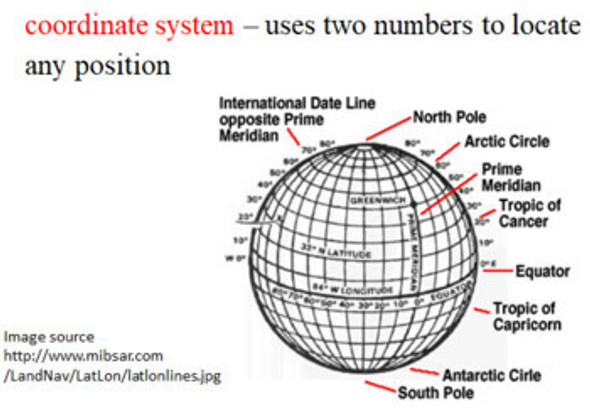Description
This zip file contains many different activities (66 pages of student handouts and a 2 PowerPoints with a total of 122 slides) which can be used to compose a unit involving energy in Earth processes. Concepts addressed but not limited to include the electromagnetic spectrum, five interactions of solar radiation with the environment, methods of heat transfer (conduction, convection and radiation), specific heat, Heat of Fusion, Heat of Vaporization, latent heat and several other concepts. The learning objectives and specific contents of this set of materials is listed below. This set of activities is suited for many earth science, environmental science or physical science classes. With teacher guidance, many components in these materials are adaptable to an enriched middle level science curriculum.
This learning package does not include the total energy gained or lost in specific heat, Heat of Fusion or Heat of Vaporization calculations. This is addressed in the Physical Behavior of Matter Learning Package (Distance Learning) unit from my chemistry items that are for sale.
All documents are in PowerPoint, word or pdf format to allow you to edit the documents to meet your needs. Many of the activities in this package of activities are well suited and easily modified for use in distance learning environments. Answer keys for all student activities are provided.
The specific contents of materials in the package are as follows:
- Energy in Earth Processes Completion Notes (14 pp.)
- PowerPoint to accompany the Completion Notes (46 slides including 4 closure/ticket out activities)
- Heat Transfer Lab Activity (5 pp.)
- Convection Lab (1 pp.)
- Phase Changes in Water Lab ( 5 pp.)
- Analysis of the Heating Curve of Water Activity (3 pp.)
- Energy in Earth Processes Worksheet 1 (Electromagnetic Radiation and its Interactions) (41 questions) (9 pp.)
- Energy in Earth Processes Worksheet 2 ( Energy Types and Transfer) (7 pp.) (27 questions)
- Energy in Earth Processes Worksheet 3 (Specific Heat, Phases and Phase Changes) (52 questions) (8 pp.)
- Energy in Earth Processes PowerPoint Jeopardy Game (74 slides) (31 questions)
- Energy in Earth Processes Exam (50 questions) (14 pp.)
NGSS Core Ideas Addressed
ESS2.D: Weather and Climate
ESS2.C: The Roles of Water in Earth’s Surface Processes
Common Core Standards
ELA/Literacy: RST.11-12.8, WHST.9-12.1
Mathematics: MP.2, MP.4
NY State Physical Setting/Earth Science Core Curriculum Correlations
Standard 1: Key Idea 1: Analysis, Inquiry, and Design: Engineering Design
Standard 4: Performance Indicator 2.1: Major Understandings 2.1 a, 2.1 b,
Performance Indicator 2.2: Major Understandings 2.2 a, 2.2 b, 2.2 c
Learning Objectives
Upon the completion of this unit the student will be able to:
1. define the term energy.
2. list several major drivers of the Earth's energy.
3. list some characteristics of electromagnetic energy.
4. explain what is meant by a transverse wave.
5. given a diagram, be able to identify and define the following components of a transverse wave; crest, trough, amplitude and wavelength.
6. relate wavelength and frequency to the energy of electromagnetic radiations.
7. identify different wavelengths and frequencies of various electromagnetic radiations using a reference table.
8. recognize that dark, rough surfaces are the most effective at absorbing electromagnetic radiation.
9. recognize the Earth's surface reradiates much of its absorbed electromagnetic radiation as infrared radiation.
10. recognize the more effective a surface is at absorbing electromagnetic radiation, the better it is at re-radiating radiation such as infrared radiation later.
11. describe the following interactions between electromagnetic radiation and the environment; refraction, reflection, absorption, transmission and scattering.
12. explain what is meant by dynamic equilibrium and list an example of this.
13. discuss three methods of heat transfer; conduction, convection and radiation.
14. explain how convection currents distribute heat within a fluid.
15. list several reasons heat transfer in non-closed systems is not 100% efficient.
16. define the term mechanical energy.
17. define the terms kinetic energy and potential energy.
18. discuss how the mass and velocity of a moving object influence its kinetic energy.
19. explain how the potential energy of an object relates to its position above the Earth.
20. discuss the relationships of kinetic and potential energy in a pendulum and in a roller coaster.
21. define the terms heat and temperature.
22. compare the three major temperature scales; Fahrenheit, Celsius and Kelvin.
23. define the terms source and sink.
24. recognize that thermal energy moves from sources to sinks.
25. identify the joule as the metric unit of energy or work.
26. define the term specific heat.
27. recognize that water has a higher specific heat than solid Earth systems and relate that to its rate of heating or cooling in comparison to them.
28. discuss why water is a good climate moderator.
29. explain how adding or removing heat energy may produce changes in phase and atomic/molecular motion.
30. define the following terms associated with phase changes; melting, freezing (solidification), crystallization, vaporization, condensation, sublimation and deposition.
31. identify the phases and phase changes by name on a phase change diagram.
32. define the term heat of fusion.
33. define the term heat of vaporization.
34. use a reference table to determine the heat of fusion and heat of vaporization values of water.
35. use a reference table to determine the specific heat values of several common substances.
36. explain what is meant by latent heat and how it relates to phase changes.
37. recognize nuclear fusion of hydrogen to helium produces solar electromagnetic energy.
38. list some sources of the Earth's interior energy.
39. explain the difference between nuclear fission and nuclear fusion.
Terms of Use
Purchase of the product is for classroom use by the purchaser only. It is a violation for individuals, schools, and districts to redistribute or sell this item on the Internet or to other individuals. I do encourage you to use and edit these documents to suit your needs with your own students in distance learning environments.
This work is licensed under a Creative Commons Attribution-NonCommercial-ShareAlike 4.0 International License.


















